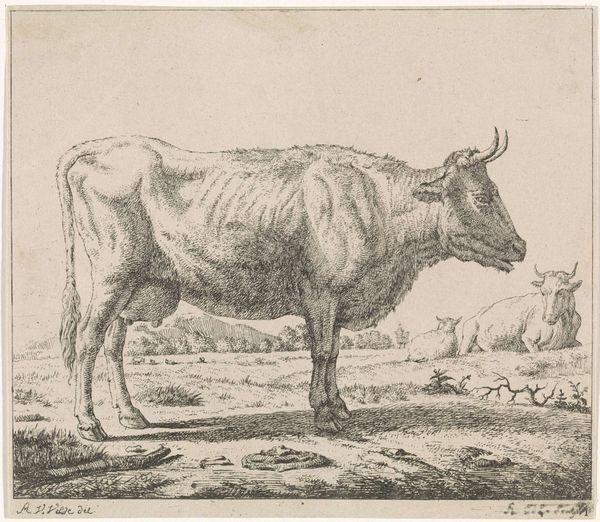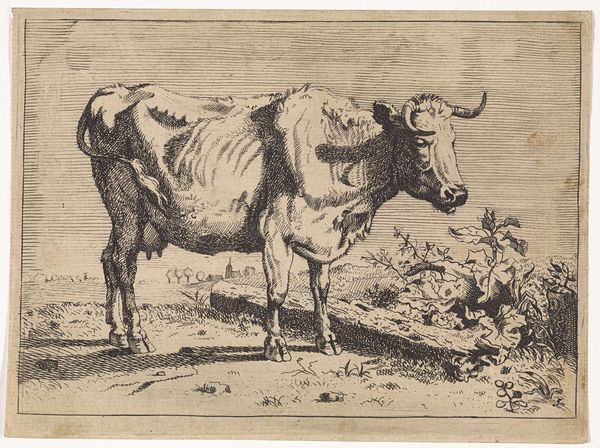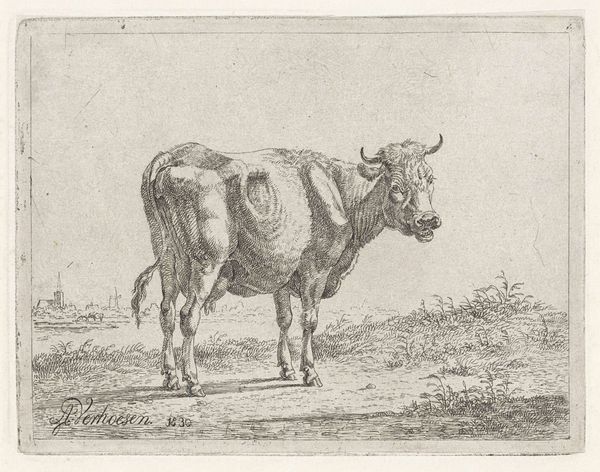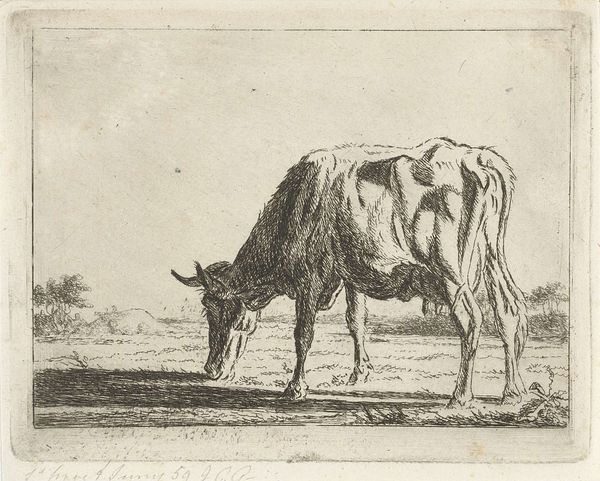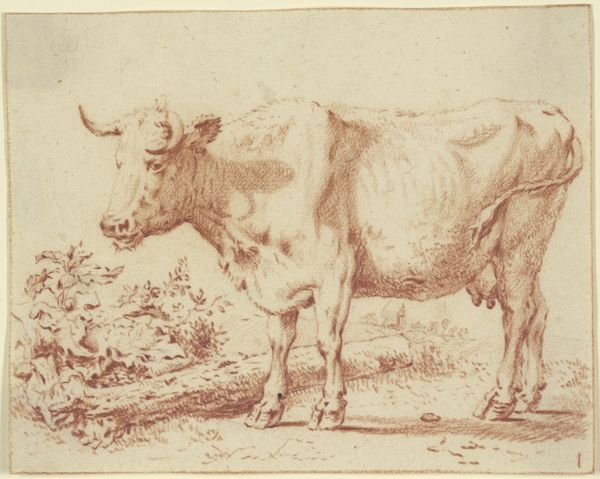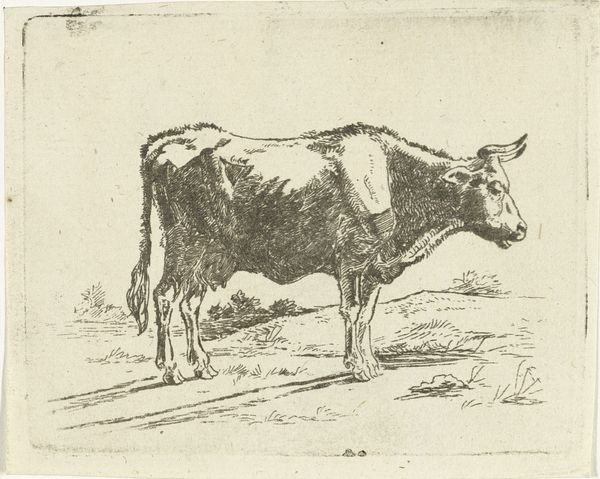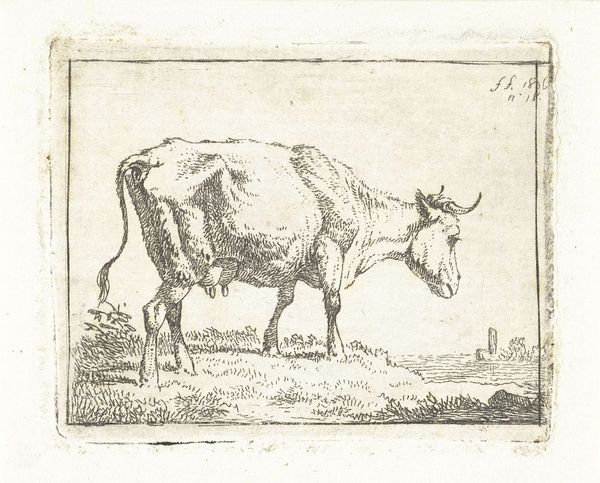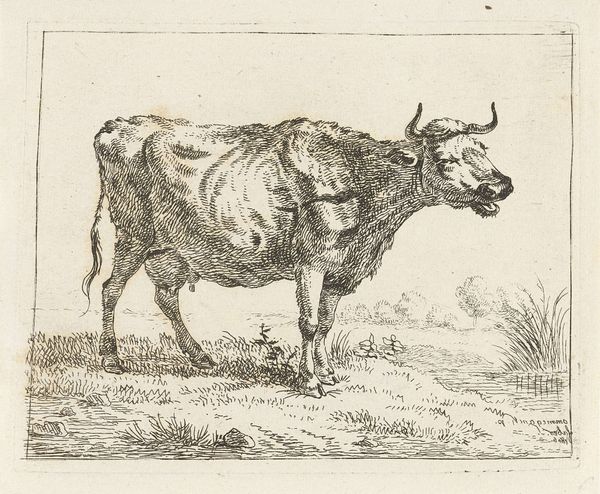
drawing, print, etching
#
drawing
#
animal
# print
#
etching
#
landscape
#
realism
Dimensions: height 114 mm, width 142 mm
Copyright: Rijks Museum: Open Domain
Editor: So, here we have "Standing Bull, with a block of wood near its feet", an etching by Marcus de Bye, created sometime between 1657 and 1688. It feels so grounded, so much about the animal in its place. What are your thoughts on how it relates to ideas about labor, materiality, or consumption? Curator: Well, let's consider the etching process itself. It’s a print, so inherently reproducible, potentially circulating images of rural life to urban consumers. De Bye’s meticulous rendering of the bull – notice the detail in its hide, the rendering of the wood itself. It elevates the everyday. This points toward an emerging consumer desire for images connected to agriculture, perhaps divorced from the actual labor. What does that block of wood signify to you? Editor: It seems almost like an object of rest, or perhaps something more…mundane? Like scrap? Curator: Precisely. Consider how De Bye treats the block of wood with the same care as the bull, elevating the mundane to art. We’re seeing not just an animal, but a stage in the animal’s transformation. This image is created via craft and made to be consumed by those profiting off the labor the image obscures, and it is sold as 'high art'. What do you make of the fact that it's realism? Editor: So, it’s realism that, through its very making, becomes part of the economic system it portrays, sort of reflecting and participating in the labor cycle. That is an angle that I did not expect! Curator: Absolutely. It encourages us to look at the artist's labor as another contribution to a circuit of consumption. A seemingly simple image contains multitudes, from the material to the metaphorical. Editor: I now see the art less as an isolated object, and more as a cog in a wider, socioeconomic machine. It will impact the way I will now consider how other images interact with the labor from which they’re inspired. Curator: Excellent! Analyzing how the artwork connects to societal structures brings history into the here and now, and enables fresh appreciation.
Comments
No comments
Be the first to comment and join the conversation on the ultimate creative platform.
